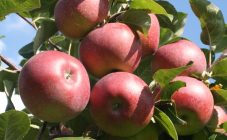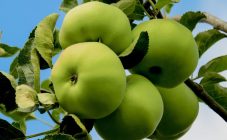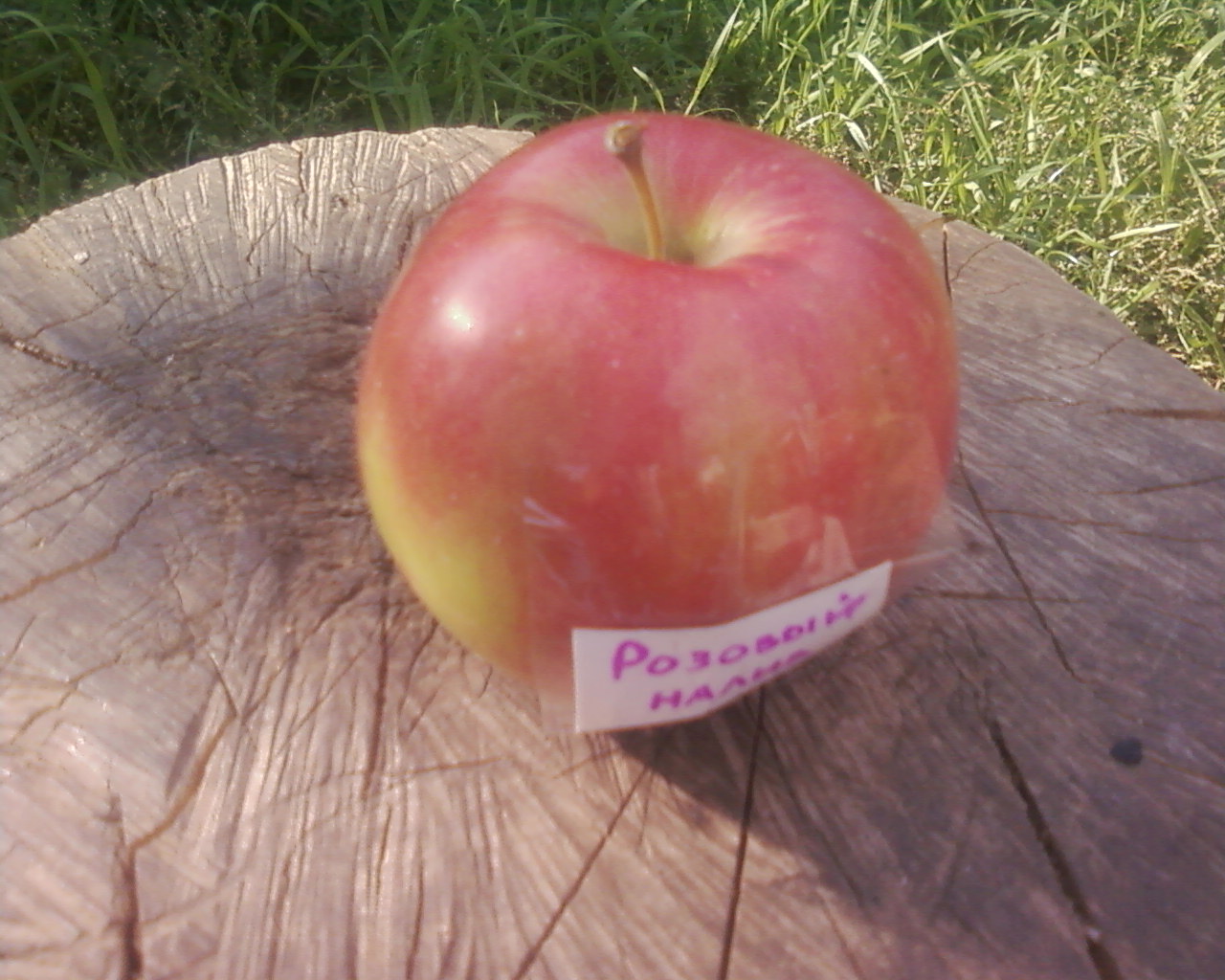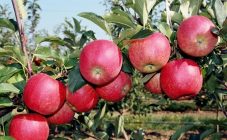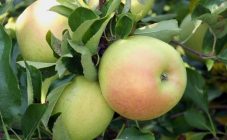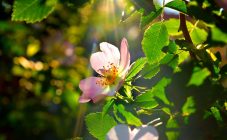Content:
The most common fruits in our country and not only are apples. They are also very useful. Therefore, many summer residents strive to grow fruit-bearing trees on their site. First of all, the question arises about the choice of the variety of this culture. There is a lot of discussion and controversy about the best varieties of early ripening. Many agree that one of the brightest representatives of this category can be considered a plant - the bugle apple tree.
A bit of history
Starting the description of the Hornist apple tree, it should be noted right away that this tree belongs to crops with a summer ripening period. This variety was the result of the work of the breeder L.A. Kotov, who works at the Sverdlovsk experimental station. The production of a new apple variety Hornist was carried out in 2 stages:
- First, the tree of the Cinnamon striped variety was pollinated with a mixture of pollen from the Ural apple trees. The result was hybrid # 2-8-2;
- The resulting hybrid was free pollination.
Having successfully passed all the tests, the species showed good germination characteristics in the Ural region. For this reason, the plant was included in 2002 in the State Register for cultivation in the Ural region, but today this variety has spread to many other areas and pleases its owners. Due to the good indicators of winter hardiness and the defeat of fungal diseases, the trees of this variety of apple trees will grow well in places where there is a damp and cool climate.
Features of the variety
Trees of the Gornist variety are distinguished by their strong appearance and good growth. An adult apple tree grows up to 9 m in height. The first years, while the crown is just forming and the tree is growing, it has a pyramidal shape, but in an adult plant it already takes on a spherical shape. The main branches, on the ringlets of which the fruits are located, grow straight and are covered with a reddish peeling type bark.
The leaves are traditionally ovoid, but very wide. They are painted green and attached to a short handle. During flowering, the characteristic apple-tree pink buds first appear, which turn white when blooming. The petals are bent upward, the flower looks like a saucer.
An important feature of this variety, and most likely a disadvantage, is the self-infertility of the plant species. In order to get a harvest every year, it is imperative to plant other varieties nearby.
After the plant is vaccinated, the fruits will appear in 4-8 years. Up to about 80 kg can be harvested from one mature tree.
The plant has good indicators of frost resistance. In terms of resistance to cold frosty winters, the tree is not inferior even to the well-known Uralets variety. The big advantage of this species is its good immunity to scab and other fruit diseases.
Early tasty fruits grow medium in size, the weight of each of them reaches 90-110 g. By their shape, apples are oblong ovoid, have weak ribs. Their funnel is narrow with a sharply pointed canonical shape.
Apples have a creamy color with a bright red outer skin. The rind is thin and smooth.The fruits of this variety are very juicy, but at the same time there is some roughness and coarse grain in the pulp. The rating of taste according to the corresponding scale is 4.4 out of 5 possible.
The chemical composition of the fruits of this variety is as follows:
- sugar - 9.3%;
- dry soluble substances - 11.5%;
- acids - 0.7%.
The fruits of the Gornist variety have a relatively low content of ascorbic acid - only 11 mg per 100 g.
Harvesting can be done around the 20th of August. But it's bad that you won't be able to store the tasty fruits of this variety for a long time. The harvested apples can lie for about 20 days. Therefore, after collection, they should be quickly eaten or processed.
Growing features
As a big plus of this variety, it should be noted unpretentious care. To get a good harvest every year, you just need to provide the trees with good light, fertile soil and proper crown formation.
It is important to choose the right place for planting - a tree, due to its large growth, requires a lot of space. The apple tree loves lighted places where the soil is fertile. It should be borne in mind that the plant does not like acidic soils, as well as the presence of groundwater.
Landing rules
Before planting a seedling, its roots should be soaked in water with the addition of phytohormones. Also, before direct planting, the root system is thoroughly examined, it is necessary to remove all old and rotten roots.
At the landing site, a hole is dug with a small hill of soil in the central part. A seedling is placed in a hole, each root is carefully straightened and carefully sprinkled with soil. It is not worth tamping strongly, a small hill should remain near the trunk, which after watering will settle by itself.
Crown formation
At the very beginning of growth, a pyramidal crown will be noticeable. This circumstance obliges the owner of the tree to carry out regular pruning and crown shaping. In a young tree, skeletal branches should be regularly removed, which thicken the crown and grow at an acute angle. They can break under snow and in strong squally winds, leading to a wound on the trunk.
It is also important to carry out sanitary pruning on time, which means removing old and dry branches. This will help prevent disease and pest colonization.
Features of feeding
In order for the tree to bear fruit and give a beautiful tasty harvest, it is important to replenish the soil with the nutrients necessary for growth in a timely manner. The apple tree bugler requires regular fertilization. These can be organic or mineral compounds in which potassium, phosphorus and nitrogen are present in sufficient quantities.
The frequency of fertilization depends on the type of soil (1-3 times a year).
Diseases and pests
The big advantage of Hornist over other varieties is good resistance to scab and fungus, but the tree can suffer from pests. Among them, the most terrible enemies can be:
- weevil;
- color beetle;
- aphid;
- leaf roll;
- apple sawfly.
When the first signs of damage by any insects appear, treatment with complex insecticides should be carried out, and smelling traps should be placed to eliminate flying pests.
Advantages and disadvantages of the variety
The Gornist apple variety has a lot of positive sides, which are often biased in their favor when buying. Here are the most significant and significant ones:
- high productivity;
- early fruiting period;
- excellent frost resistance (withstands up to -33);
- there is no break in fruiting, i.e. the harvest from the apple tree will be consistently harvested annually;
- high level of immunity to many diseases, including scab and fungal infections.
A significant disadvantage of this type of apple is its self-fertility, so it is important to stir trees of other varieties nearby. Also, as a disadvantage, it should be noted that the fruit is injured. Apples can be stored for no more than 28-30 days. Another disadvantage should be noted the high probability of damage to fruits by worms and other insects.
In general, the Gornist apple variety is an ideal variant of early varieties of trees, which, subject to certain rules of agricultural technology, will allow an early tasty harvest of universal purpose to be obtained annually.



